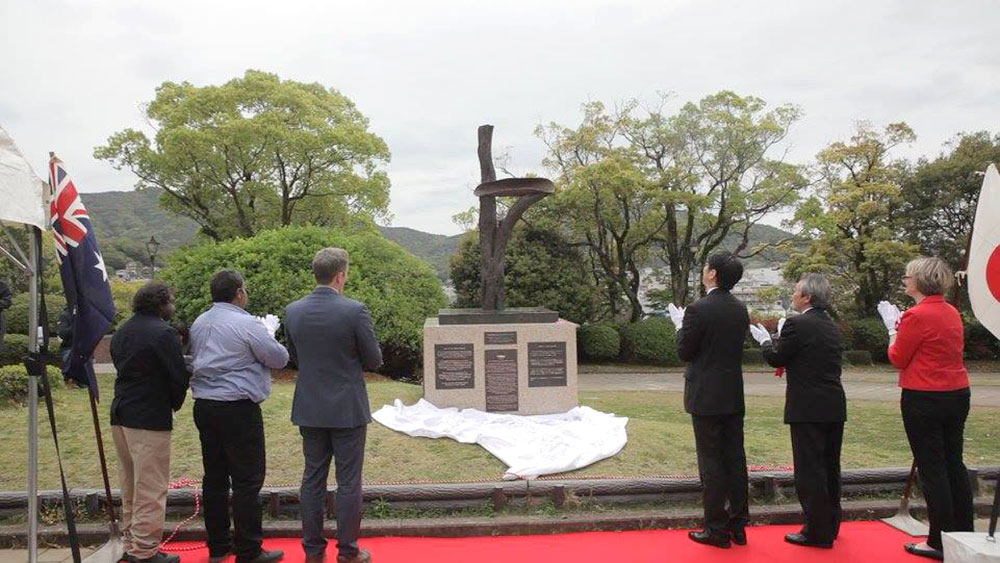Yalata Anangu, which simply means ‘people’, were also known as Spinifex People, who occupied the land south of the great Victorian Desert.
Our ancestors were hunters and craftspeople who were experts at finding water and conserving food. Song lines passed down over generations, helped to guide Anangu in an arid and sometimes inhospitable land.
In the 1920-1930s, Anangu were displaced from the Western Desert to Ooldea Station where Ooldea Mission was established by the ‘United Aborigines Mission’. Gathering essentials from what was known as the Tea and Sugar Train, which serviced remote towns on the Nullarbor Plain along the Trans-Australian Railway, they also created water storage using the Ooldea Soak, the only permanent natural water source in the area.
In the early 1940s, the British and Australian Governments also started to use water from the Soak for the railway’s steam engines. The water supply was further depleted by the increasing settler population at Ooldea Mission. The Soak quickly began to dry up, forcing Anangu to find other water supplies. The settlers further damaged the land by cutting down the black oaks for firewood that stabilised the dunes and provided shelter, and with the introduction of camels and livestock, who stripped the land of vegetation.
In 1952, Anangu were displaced again, when the British and Australian Governments established nuclear weapons testing sites at Emu Field and Maralinga on Anangu Traditional Lands. Families were loaded in trucks and forcefully removed to Old Yalata homestead near Fowlers Bay, but many of our ancestors were ‘walking around’ unaware that the tests were taking place when the bombs went off. Those found were brought to Yalata, many suffering serious health problems from radiation exposure. Other Anangu left behind walked for days in search of their families but sadly, many were permanently separated and never seen again.
A few years later Anangu families were relocated by the Lutheran Church to Tullawon Tank, where Yalata Mission was established, and Yalata Community remains today. Here they were closer to the scrublands for hunting and gathering, and still able to collect from the coastlines.
In 1994 a Royal Commission was set up to investigate the nuclear tests and Anangu gave compelling testimony. Lands were returned to our people, as the Traditional owners, and we could return to Our Lands and resume the cycle of ceremonies that had been disrupted for 30 years.
Nagasaki and Yalata Peace Sculpture
In 2014 Yalata and Japan’s Nagasaki communities got together to share their experiences of nuclear exposure. To commemorate the moment, Yalata created the ‘Tree of Life’, a gathering dish made from sandalwood balanced on two branches. The sculpture symbolises gathering and holding firm for future and past generations. In 2016 it was carved out of bronze and now stands in the grounds of Peace Park in Nagasaki, Japan.
Many community members are still engaged in storytelling about the bomb and displacement.
Old Yalata Roadhouse
Yalata Roadhouse began as an Officers’ Mess at the Maralinga nuclear test site in the 1950s. It was salvaged from Maralinga by Lutheran missionaries and re-assembled at Yalata in the 1970s. The Roadhouse served as an important meeting place for the Yalata community and local people. It was a hub for employment opportunities and activities. Services offered included a fuel station, garage, arts and craft sales, and restaurant.
Yalata Roadhouse was closed in 2006 due to safety concerns around its structural integrity and high asbestos content. It remained unoccupied for many years and was a source of sorrow for Yalata Community, ‘Like a family member that had become sick.’
The building was demolished in 2018, to make way for plans to rejuvenate the site for future generations, with a memorial erected to acknowledge the past.







